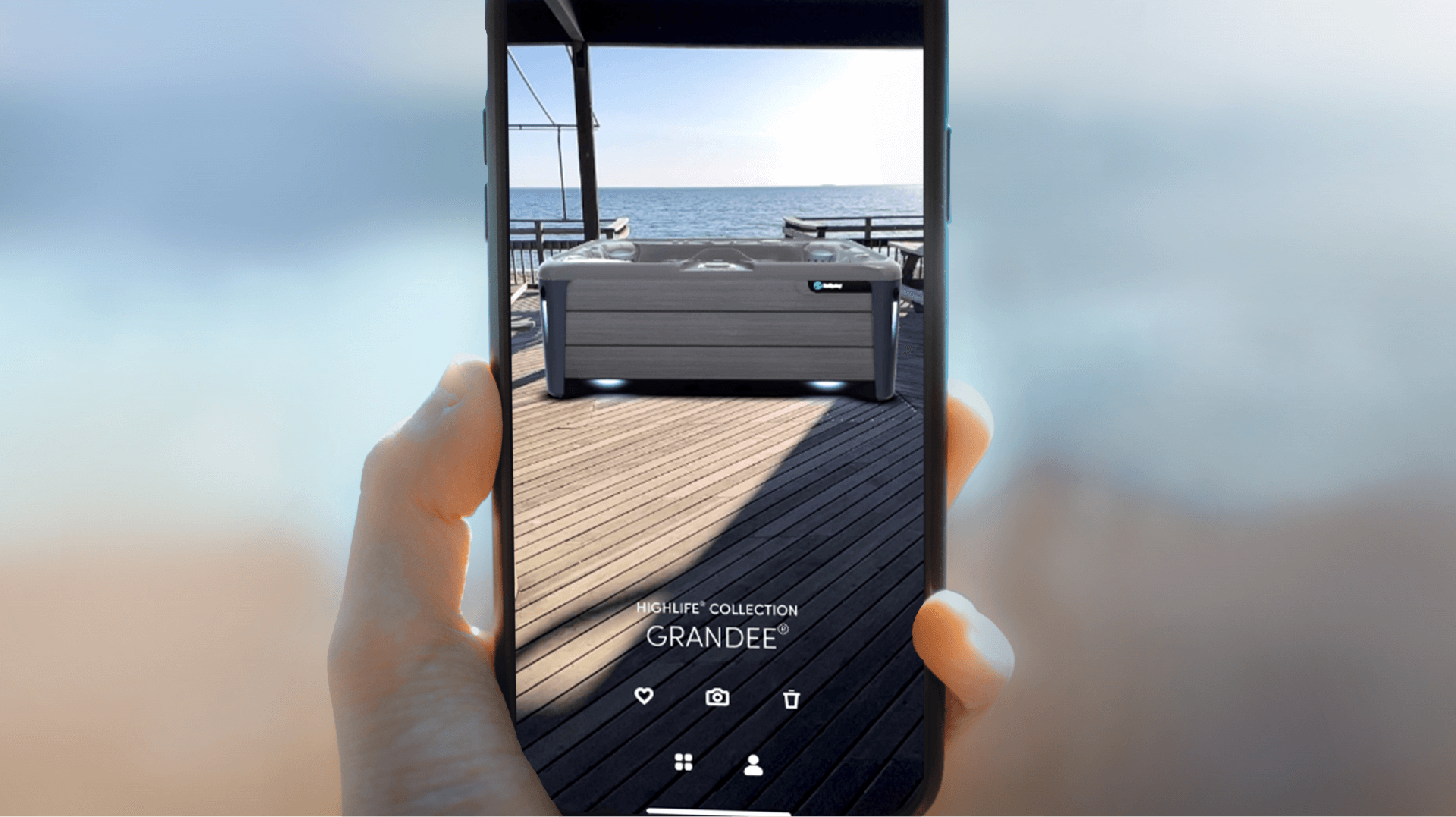In our previous article we spoke in depth about marker-based AR. Before we dive into markerless AR, make sure you check out that article.
Unlike marker-based AR, markerless AR does not need a marker such as a QR code to be scanned. You simply launch the mobile app or web AR experience. Then it scans the real environment around you, placing the digital element on a flat surface such as the ground or a wall.
Markerless AR works through a technology called SLAM (simultaneous localization and mapping). While it scans the environment around you it creates maps for where the digital element will be placed. This allows the digital element to stay locked in where it has been placed, and allows the user to walk around the object to view it from any angle.
Markerless AR is used frequently in gaming and online shopping. Ranging from experiences such as Pokémon Go to the Hot Spring Spas Virtual View™ AR app. Reality Interactive created the Hot Spring Virtual View™ AR app for Hot Spring Spa to help their customers choose any spa, customize it, and view it in the most ideal location. This experience helps customers understand what they’re buying, connects customers with their local Hot Spring retailer and allows them to share their favorites with a spa specialist.
Pro’s
- More flexible than marker-based AR because it can be placed anywhere
- App usage for markerless AR is typically higher than marker-based AR
- You can initiate the experience from anywhere without needing a marker
Con’s
- Production cost is higher than marker-based AR
- Accuracy is generally lower with markerless AR
- In order to work best it needs a surface that has texture for the camera to recognize it






